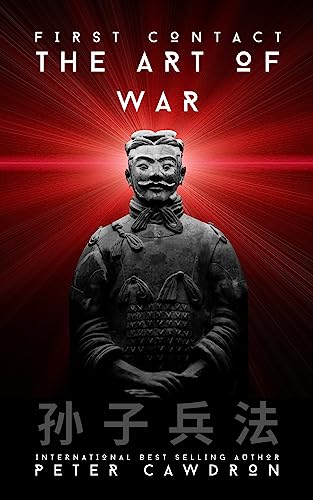
Most portrayals on film or in novels of an alien invasion are along the lines of the Will Smith blockbuster Independence Day or H. G. Wells’ 1898 science fiction classic, The War of the Worlds. There are a lot of explosions, and millions die. So, it may come as a pleasant surprise if you pick up a copy of Peter Cawdron’s new alien invasion novel and find there nothing of the sort. Of course, if you’re familiar with the Chinese classic of military strategy, The Art of War, written nearly 2,500 years ago, you may be better prepared for the story. Because its author (or authors) viewed the aim of war as achieving peace, avoiding battle whenever possible. So, get ready for a brilliant lesson in strategy as the Joint Chiefs of Staff understand it—because they, too, have studied that Chinese classic.
Estimated reading time: 7 minutes
An in-depth study of First Contact in an alien invasion novel
In 2011 Australian science fiction author Peter Cawdron set out to explore the concept of First Contact in depth. His plan was to write a series of 25 standalone novels on the theme, and he’s nearly there now. The Art of War is the 23rd in the series—and it’s one of his best. As he writes in an afterword to the novel, “I try to grow as a writer from one book to the next, focusing on character and pacing over plot contrivances.” And that growth is everywhere in evidence in this novel. Some sharp-eyed Hollywood producer could turn this story into a film that might rival the original Star Wars. It’s full of surprises.
The Art of War (First Contact #23) by Peter Cawdron (2023) 431 pages ★★★★★
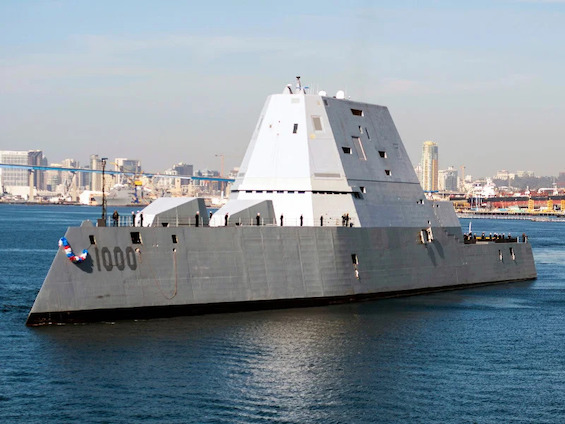
Two astronauts in love
The Art of War opens in Paris, where two young people are in bed. They’re in love. Mark Armstrong, the American, is an astronaut and widely celebrated for his heroism. He had saved the day when his capsule threatened to burn up on reentry to Earth after a deep space mission. And Li Jing, the woman, Chinese, is a medical doctor training to join him and six others in the first joint American-Chinese rendezvous in space. They’re in Paris for cross-training in preparation for the historic mission. But then the training abruptly ends. They’re both rushed home. Their two countries are at war in the Taiwan Strait. But we most certainly have not heard the last of Mark Armstrong and Li Jing.
A Mandarin-speaking Chinese American strategist
Meanwhile, we have joined Commander Lisa Chao of the United States Navy on board the Navy’s most advanced new guided-missile destroyer, the USS Grant. The $4 billion Grant is in international waters off the coast of Taiwan. But no sooner does the captain announce their presence to the Chinese coast guard than the ship’s instruments pick up four anti-ship missiles heading their way. It’s standard protocol for the captain to activate the ship’s defenses—but Commander Chao persuades him not to do so. She is an expert who specializes in Chinese military doctrine and strategy. Like China’s most senior military commander, General Mao Huang, she is a student of Sun Tzu’s The Art of War. Her advice to the captain of the Grant mirrors classic Chinese strategy. And its success elevates Commander Chao into a central role in the events that transpire in the weeks ahead.
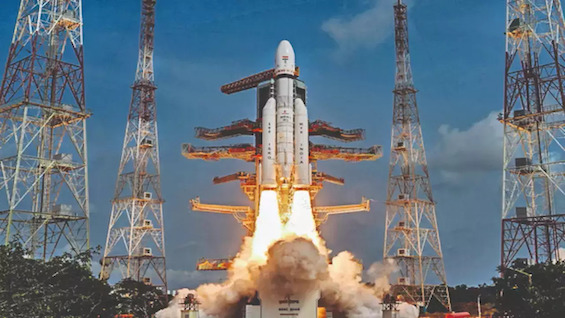
An overall assessment
Mark Armstrong, Li Jing, and Lisa Chao are all at the center of the action as the story unfolds. The action shifts from the Taiwan Strait to Washington, DC, the coast of China, an Indian island in the Bay of Bengal, and the dark side of the Moon. And Mark and Lisa are joined in top billing by Mark’s twin brother, Michael, a US Air Force F-35 fighter pilot—because, yes, there is fighting. But the thrust of the plot revolves around strategic deliberations at the highest level in both China and the US. General Mao Huang and the President of the United States both enter the scene. The Art of War is nothing less than a primer in strategy that the war planners in the Pentagon would find familiar.
Of course, this is science fiction. Aliens appear in the story, and there is contact. This is the First Contact series, after all. But Cawdron’s ultimate purpose in telling this tale is to explain why SETI, the Search for Extraterrestrial Intelligence, has failed to turn up any signs of alien life despite continuous efforts since the 1960s. He also debunks the persistent and widespread belief that UFOs (or UAP, as the US government insists on calling them) represent alien visitors. And he explains why the stock science fiction explanations for an alien invasion—”they’re here to steal our water” or “our minerals”—are so much nonsense. This is intelligent, hard science fiction, soundly based on what we know today about life in the universe.
A handful of minor errors
There are a few minor errors that might jar an American reader who plays close attention to the text. For example, no American would use the words “boffin” (a scientific expert, in English vernacular) or “spanner” (wrench). And the Executive Office Building connected to the White House was not built to house administrative offices. (It was originally the home of the State, War, and Navy Departments.) But in the context of this terrific novel, such slip-ups are inconsequential.
About the author

Over the past dozen years, Australian author Peter Cawdron has published 23 standalone First Contact novels. He projects a total of 25, after which presumably he’ll turn to some other theme. The series as a whole offers a panoramic view of the possibilities raised when we come into contact for the first time with extraterrestrial intelligence. Cawdron was born in New Zealand but moved to Australia many years ago. He has also spent several years living in the United States. Cawdron lives with his wife and three children in Brisbane on Australia’s east coast.
For related reading
This is one of The 21 best books of 2023.
You’ll find all the other books in this series at Peter Cawdron’s insightful First Contact book series. And you can see other authors’ efforts on the same theme at The five best First Contact novels.
For more good reading, check out:
- These novels won both Hugo and Nebula Awards
- The ultimate guide to the all-time best science fiction novels
- 10 top science fiction novels
- The top 10 dystopian novels
- 10 new science fiction authors worth reading now
And you can always find my most popular reviews, and the most recent ones, on the Home Page.

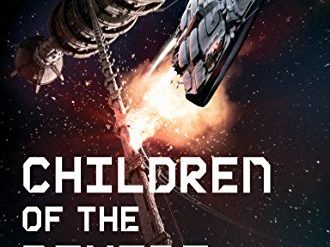

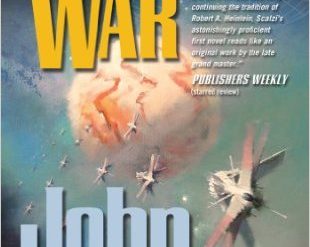























I contacted the author via his blog to let him know a couple of other little glitches:
1. Sea King rescue helicopters were all retired decades ago.
2. USAF F-35s don’t have lift fans or Vulcan cannons.
Peter Cawdron, ironically, does not think there is credible evidence that we have ever been visited by aliens. I agree.
That being said, I also argued with him about the “Nimitz incident” which lead to the release of the famous FLIR videos by the Pentagon. As his protagonist in the novel says, Cawdron thinks the whole episode was nonsense. I disagree. Not that I think this is evidence for aliens, but there are too many different lines of evidence associated with the event to dismiss all of them. I pointed out to him that if what the pilots, their tracking systems and shipboard radars saw were airliners or USN fighter jets, then there should have been transponder/IFF identification. If so, the whole thing could have been put to bed years ago. My son Kevin is a USAF radar technician, so we have discussed this.
Regardless, I too, really liked the book.
Thanks for the detail, Andrew. I think Peter Cawdron will take your corrections to heart. He just wrote me about making corrections today on Amazon reflecting the ones I noted and those from experts in other fields.